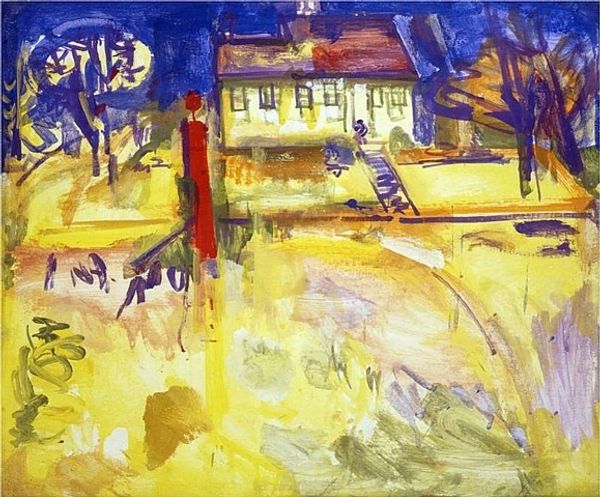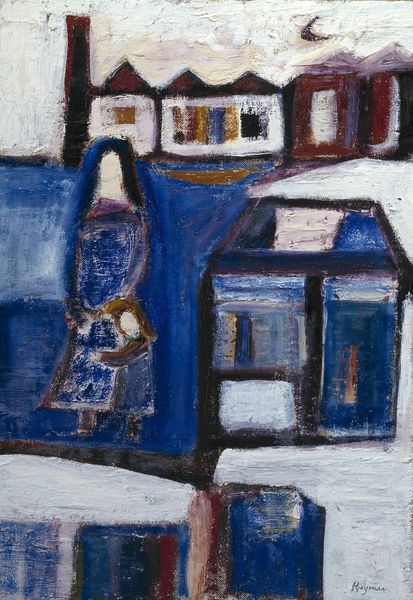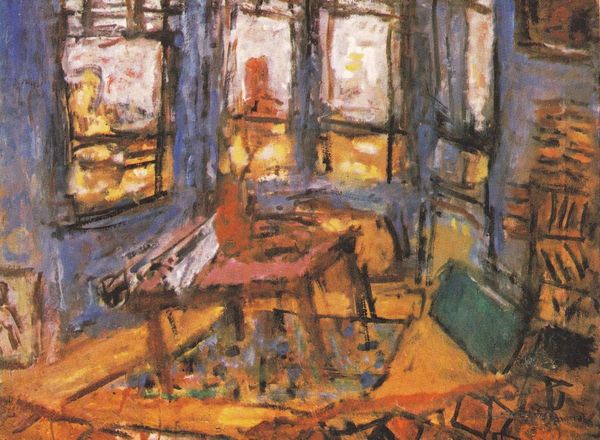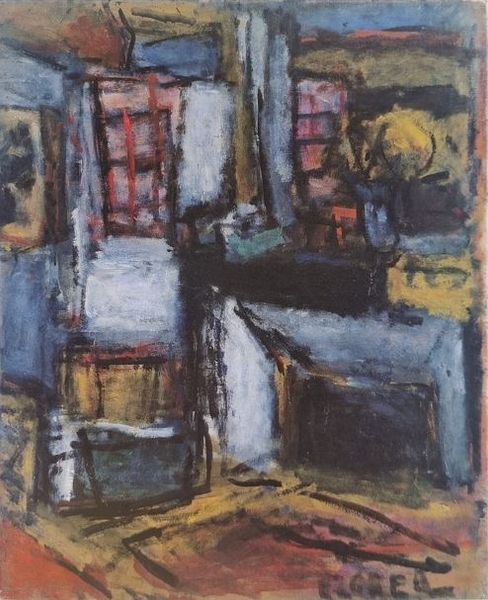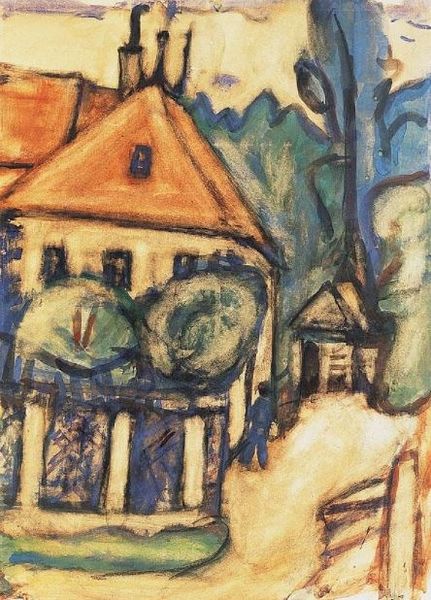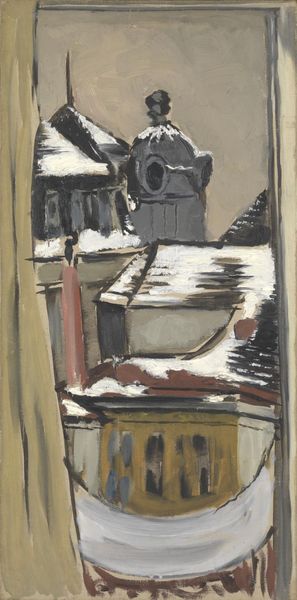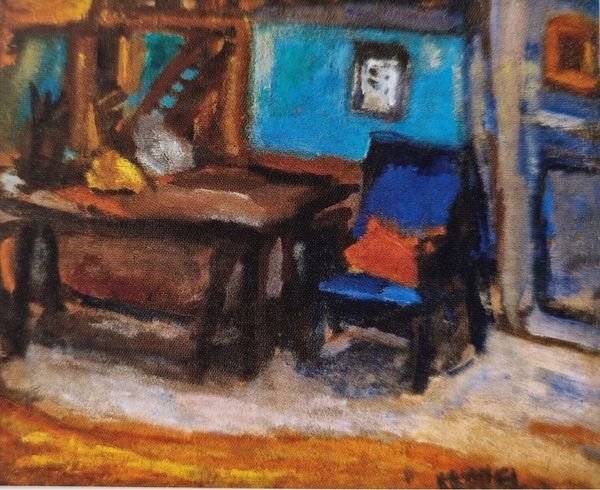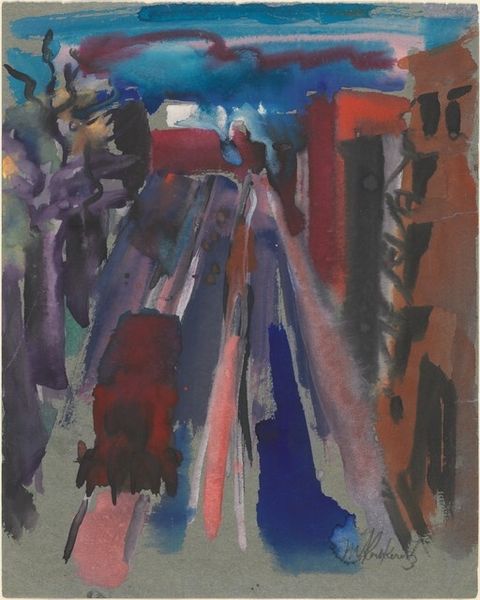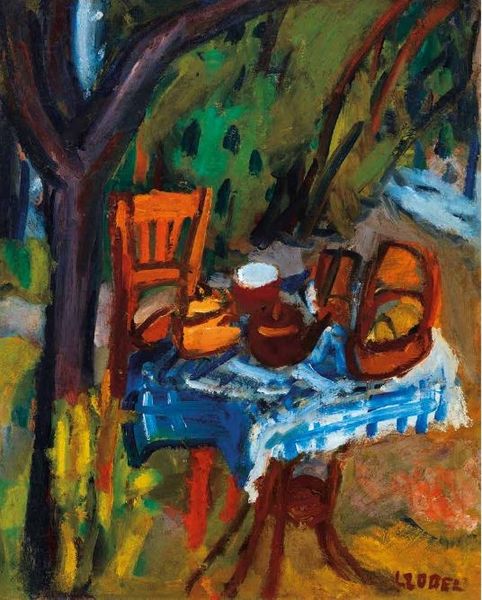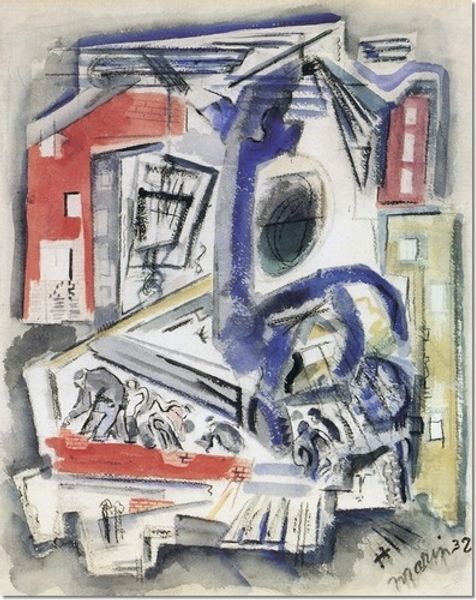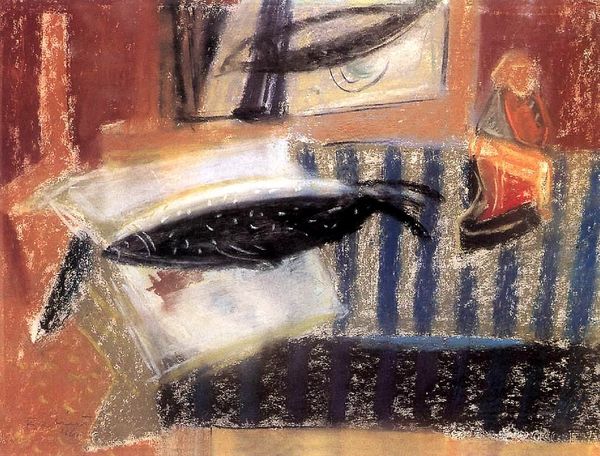
oil-paint
#
portrait
#
self-portrait
#
oil-paint
#
oil painting
#
famous-people
#
neo expressionist
#
male-portraits
#
expressionism
#
men
#
portrait art
#
modernism
#
fine art portrait
#
sea
Dimensions: 80 x 64 cm
Copyright: Public domain
Curator: My initial reaction is of fragmented isolation—the harsh blues against the sickly yellow palette really set a somber tone. Editor: Indeed. Let's delve into Edvard Munch's "Self-Portrait During Eye Disease II," created in 1930 and currently residing at the Munch Museum in Oslo. It is a penetrating oil-paint on canvas. Curator: The use of oil allows him a certain fluidity, which is starkly juxtaposed against the obvious suffering. I am curious about how this illness, presumably impacting his vision, affected the way he saw and represented his reality through labor. Did it skew his perception? Heighten other senses and alter the importance of mark making itself? Editor: Notice the structure – how Munch uses distorted lines and planes to create a space that feels unstable. The window looms, both a frame and a barrier, containing another figure of himself inside as an unpainted statue. His visage is obscured in the foreground—we're kept at a deliberate distance, aren't we? The blurring effect caused perhaps by vision impairment, becomes itself a crucial stylistic choice to denote physical and psychological torment. Curator: I think it's interesting that his internal strife seems almost physically manifested on his face—a kind of raw reflection on his psychological well being, not just through his vision, but in the way his condition would have been visible, his deteriorating health. The painting then becomes less about purely internal feelings but reflects on the labor of sickness and aging under capitalism. Editor: I see it less as a socioeconomic statement and more as a personal unraveling of form. Look at how he disintegrates his image into swathes of color; expressionism breaking down the concrete figure of the self into component feelings—grief, sickness, introspection. This is form mirroring function so directly that it obliterates traditional representational concerns. Curator: But don't you think focusing on individual breakdown obscures the material circumstances around Munch’s life? We can not dismiss that the societal pressures to produce must still apply to an artist of that time period, that would alter the interpretation. How is his ability to generate capital and produce artwork affected, how does the societal context shift its understanding, the cultural implications of health and production? It is fascinating, this interplay of personal and collective forces, as displayed via materials available, labor required, and accessibility for audience to process this artwork in cultural context. Editor: Ultimately, this artwork demonstrates how Munch translated deeply personal struggles through radical aesthetic choices. It reminds us that the power of art often lies in its ability to render the unseen and unnameable into something palpable. Curator: Yes, regardless of lens it certainly invites us to engage in discourse about artistic representation beyond mere appearances and to analyze his socio-economic environment that informed production.
Comments
No comments
Be the first to comment and join the conversation on the ultimate creative platform.
